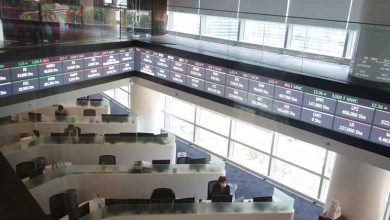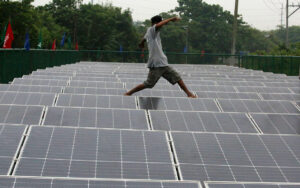World Bank lowers 2023 PHL growth forecast

THE WORLD BANK upgraded its growth forecast for the Philippines this year but expects the economy to expand at a weaker pace in 2023 amid a global slowdown and elevated inflation.
In its Philippines Economic Update report, the multilateral lender raised the Philippines’ gross domestic product (GDP) growth outlook to 7.2% this year, from the 6.5% given in September. This is at the upper end of the government’s 6.5-7.5% goal this year.
World Bank Country Director for the Philippines Ndiame Diop said at a virtual briefing on Tuesday that strong domestic demand is driving economic growth this year, contributing to the recovery in jobs and income.
The economy expanded by 7.6% in the third quarter, bringing the nine-month average to 7.7%.
“The Philippine economy has remained resilient despite a challenging global environment,” World Bank Philippines Senior Economist Ralph van Doorn added.
However, the World Bank warned growth momentum may slow starting next year, as it trimmed the GDP growth projection to 5.7% for 2023-2025, from 5.8% previously.
“The growth slowdown in 2023 is premised on the fading of pent-up demand, alongside elevated inflation and higher interest rate environment that will temper domestic demand,” the World Bank said.
Mr. Diop said this outlook is premised on a sharp slowdown in global growth, and moderate shocks that can push the world’s economy into a recession, which “will have dire consequences in the recovery of emerging markets like the Philippines.”
The World Bank expects global growth to decelerate in 2023, due to global monetary tightening, worsening financial conditions and disruptions caused by the war in Ukraine.
“These external challenges have channeled through the Philippines in the form of high inflation, peso depreciation, and capital market volatility,” it added.
Inflation quickened to a 14-year high of 8% in November, bringing the 11-month average to 5.6%.
The BSP’s average inflation forecast is at 5.8% this year, 4.3% in 2023, and 3.1% in 2024.
“We see inflation will continue to rise. We expect inflation to peak in 2023. This is premised on the second-round effects, not only has headline inflation increased through food and fuel prices, it has crept into core inflation,” Mr. van Doorn added.
Higher interest rates may temper growth in private lending and investments at a time when the government is expected to implement measures to rein in the deficit and slash debt, the World Bank said.
Since May, the BSP has raised borrowing costs by 300 bps, bringing its key policy rate to 5%.
“Continued near-term monetary tightening is appropriate to prevent a de-anchoring of inflation expectations,” the World Bank said.
The World Bank recommended that the Philippine government focus its policies on addressing the immediate challenge of elevated inflation, staying the course on fiscal consolidation, sustaining investments in health and education, and reversing the low agricultural productivity.
“The immediate challenge is to address rising inflation. This means employing both monetary and non-monetary measures, like lower tariff barriers, supporting agriculture production, and rate hikes to prevent the de-anchoring of inflation,” Mr. van Doorn said.
For fiscal consolidation, he said targeted social measures are important to manage spending.
“It’s important to eliminate spending inefficiency and add new tax measures to mobilize revenues,” he added.
Mr. van Doorn said that sustaining investments in health and education to reduce vulnerabilities from the scarring impact of the pandemic remains important.
Agriculture is also a key sector that the government must prioritize if it seeks to accomplish its development goals.
“Over the medium term, public spending on agriculture will address low productivity and food security in the country. While agriculture is only 10% of GDP, it deploys a disparate share to labor force and food production is influential to bringing down inflation,” Mr. van Doorn said. — Luisa Maria Jacinta C. Jocson




